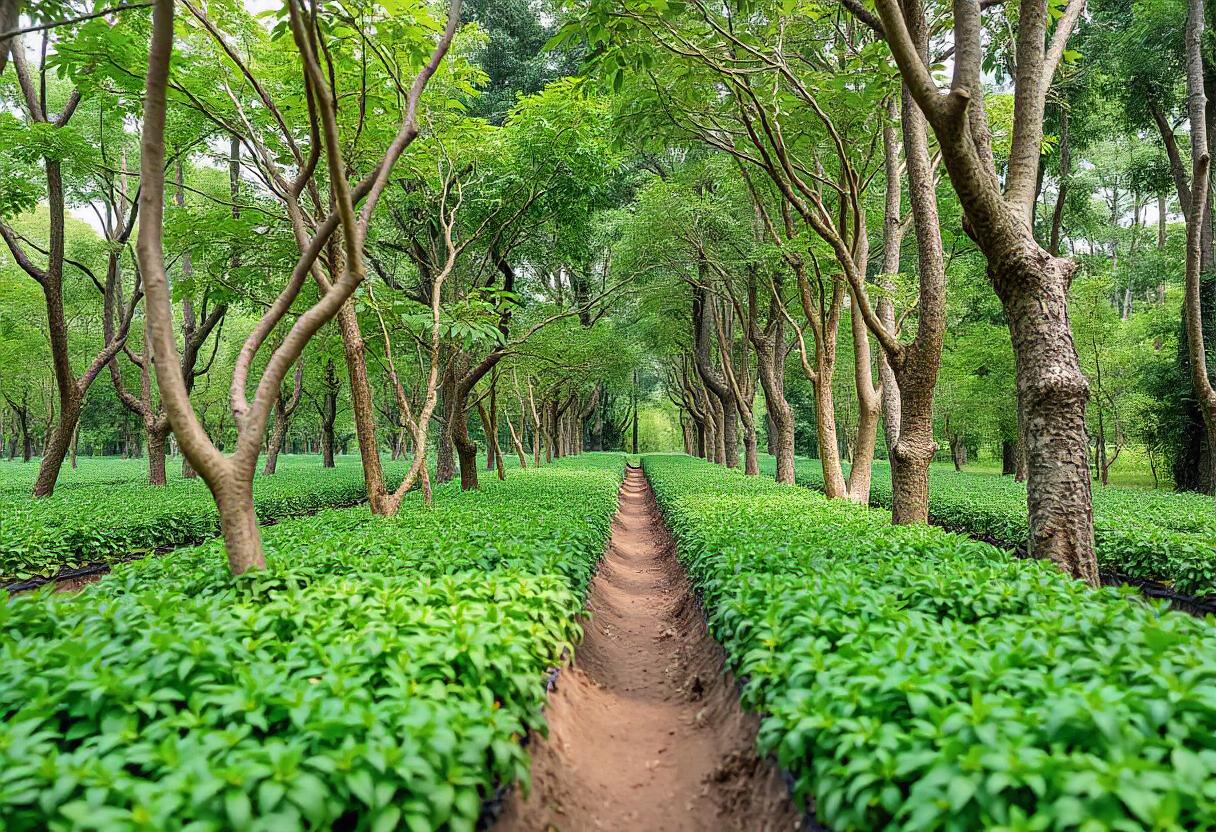
What Is Agroforestry?
Agroforestry is a land-use management system that combines trees, shrubs, and crops in a way that benefits both the environment and agricultural productivity. By integrating trees into crop and livestock systems, agroforestry aims to enhance biodiversity, improve soil health, and increase farm resilience. This approach can take various forms, including alley cropping, silvopasture, and forest farming.
Benefits of Agroforestry
Agroforestry offers multiple benefits for both the environment and farmers:
Environmental Benefits
- Soil Health: Trees contribute to soil fertility by adding organic matter and nutrients. Their root systems also help prevent soil erosion.
- Biodiversity: Agroforestry systems support a diverse range of plant and animal species, promoting ecological balance.
- Climate Regulation: Trees sequester carbon dioxide, helping mitigate climate change. They also influence local weather patterns and reduce the urban heat island effect.
Economic Benefits
- Diversified Income: Farmers can generate income from multiple sources, including timber, fruit, nuts, and livestock.
- Risk Management: Agroforestry systems can provide a buffer against extreme weather conditions and market fluctuations.
- Cost Efficiency: Trees can reduce the need for synthetic inputs, such as fertilizers and pesticides, lowering overall farming costs.
Types of Agroforestry Systems
Agroforestry can be implemented in various ways, each suited to different environmental conditions and farming goals:
Alley Cropping
This system involves planting rows of trees between crops. The trees provide shade, windbreaks, and organic matter, while the crops benefit from improved soil conditions and reduced competition for resources.
Silvopasture
In silvopasture, trees and livestock are integrated within the same area. The trees provide shade and shelter for animals, improve pasture quality, and enhance land productivity.
Forest Farming
Forest farming involves growing high-value specialty crops under the canopy of a forest. This practice leverages the natural shade and moisture of the forest environment to cultivate crops like mushrooms, medicinal plants, and berries.
Windbreaks and Shelterbelts
Windbreaks are rows of trees planted to protect crops and livestock from wind and erosion. They can also reduce heating costs for buildings and improve overall farm productivity.
Implementing Agroforestry Practices
Successful implementation of agroforestry requires careful planning and management:
Site Selection
Choosing the right location is crucial for agroforestry success. Factors such as soil type, climate, and land topography must be considered to ensure that the chosen system will thrive.
Species Selection
Selecting appropriate tree and crop species is essential for maximizing benefits. Trees should be compatible with the existing crops and livestock and suited to the local environmental conditions.
Management Practices
Ongoing management is necessary to maintain the health and productivity of agroforestry systems. This includes regular pruning, pest control, and monitoring soil and plant health.
Challenges and Considerations
While agroforestry offers numerous benefits, there are also challenges to consider:
- Initial Costs: Establishing agroforestry systems can require significant investment in terms of time and money.
- Knowledge and Skills: Successful implementation demands a thorough understanding of both agroforestry techniques and the specific needs of the selected species.
- Long-Term Planning: Agroforestry systems often require long-term commitment and planning to realize their full benefits.
Agroforestry represents a sustainable approach to agriculture that harmonizes the needs of farmers with environmental stewardship. By integrating trees with crops and livestock, this system enhances biodiversity, improves soil health, and offers economic opportunities while contributing to overall ecological balance.